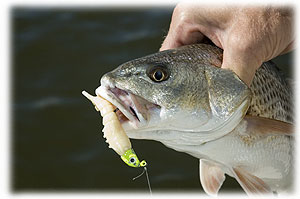Why Release Fish?
- Stressed fish populations need your help to recover.
- A personal commitment to conservation adds fun to fishing.
- Size, season, and bag regulations make release mandatory.
- A fish is too valuable a resource to be caught only once.
The future of sportfishing is in your hands. Pass it on!
How to Begin
- Use hooks that are barbless and made from metals that rust quickly. May use pliers to flatten barbs on hooks.
- Set the hook immediately. Try to prevent a fish from swallowing the bait.
- Land your quarry quickly; don’t play it to exhaustion.
- Decide to release a fish as soon as it is hooked.
- Work a fish out of deep water slowly, so it can adjust to the pressure change.
- Always keep release tools handy.
Handling Your Catch
- Leave the fish in the water (if possible) and don’t handle it. Use a tool to remove the hook or cut the leader.
- Keep the fish from thrashing.
- Net your catch only if you cannot control it any other way.
- When you must handle a fish: Use a wet glove or rag to hold it. Turn a fish on its back or cover its eyes with a wet towel to calm it. Don’t put your fingers in the eyes or gills of your catch. (Larger fish can be kept in the water by holding the leader with a glove or by slipping a release gaff through the lower jaw). Avoid removing mucous or scales. Get the fish back in the water as quickly as possible.
- Protect against personal injury by handling each species carefully and correctly.
Removing The Hook
- Cut the leader close to the mouth if a fish has been hooked deeply or if the hook can’t be removed quickly.
- Back the hook out the opposite way it went in.
- Use needle-nose pliers, hemostats, or a hookout to work the hook and protect your hands.
- For a larger fish in the water, slip a gaff around the leader and slide it down to the hook. Lift the gaff upward as the angler pulls downward on the leader.
- Do not jerk or pop a leader to break it. This damages vital organs and kills the fish.
The Final Moments
- Place the fish in the water gently, supporting its mid-section and tail until it swims away.
- Resuscitate an exhausted fish by moving it back and forth or tow it alongside the boat to force water through its gills.
- Use an ice pick, needle, or hook point to puncture the expanded air bladder on a fish taken from deep Water.
- Watch your quarry to make sure it swims away. If it doesn’t, recover the fish and try again.
- Remember, a released fish has an excellent chance of survival when handled carefully and correctly.



















